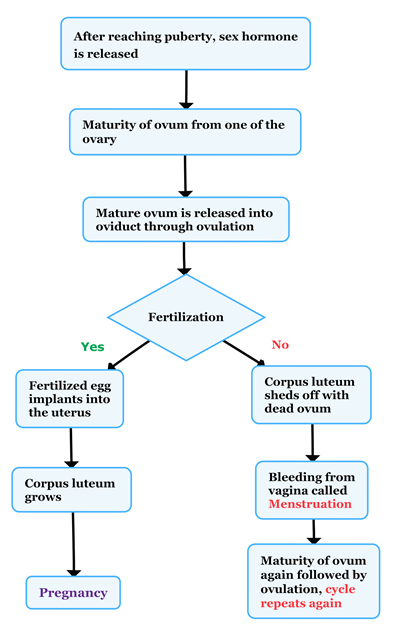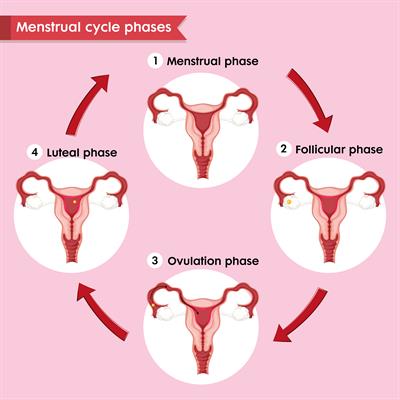PDF chapter test TRY NOW
The cyclic events that take place in a rhythmic fashion during the reproductive period of a woman’s life is called the menstrual cycle.
In females, the menstrual cycle starts at the age of \(11\)-\(13\) years which marks puberty and is called menarche. Menstruation ceases around \(48\)-\(50\) years of age, and this is termed menopause.
The reproductive period in females is marked by characteristic events that are repeated
almost every month. In physiologically normal
women, the cycle repeats once in \(28\ \)days (with minor variation) in the
form of a menstrual flow.
The beginning of the menstrual cycle marks the onset of puberty in human females.
The maturation of the immature oocytes into mature ova and subsequent events taking place in the female reproductive system is called the menstrual cycle.
One mature ovum is released (ovulation) from one of the ovaries during the middle of each menstrual cycle. Every month a matured ovum is released so that it can undergo fertilization.
During the period, the uterus changes so it can provide nourishment for the fertilized egg. The uterine lining becomes thick and spongy for the implantation of fertilized egg. If fertilization occurs, the corpus luteum continues to secrete progesterone. The secretion of progesterone maintains the thick uterine wall and prevents the maturation of another follicle till pregnancy.
If the ovum is not fertilized, the uterus sheds its lining. The corpus luteum degenerates, the egg disintegrates and uterus lining is discharged as blood and mucus. Menstruation is the bleeding from the uterus, i.e., the shedding off of the endometrial lining of the uterus that causes bleeding.

Menstrual cycle flow chart
The menstrual cycle
consists of \(4\) phases:
1. Menstrual or Destructive Phase
2. Follicular or Proliferative Phase
3. Ovulatory Phase
4. Secretory or Luteal Phase
Both the ovary and the uterus demonstrate synchrony of events during the four phases. The pituitary hormones (LH and FSH) and ovarian hormones (oestrogen and progesterone) cause changes in the ovary and uterus.

A video about menstruation is provided below to understand the importance of the process:
Reference:
https://www.vecteezy.com/vector-art/1361046-scientific-medical-illustration-of-menstral-cycle-process
https://www.youtube.com/watch?v=ayzN5f3qN8g&t=31s
